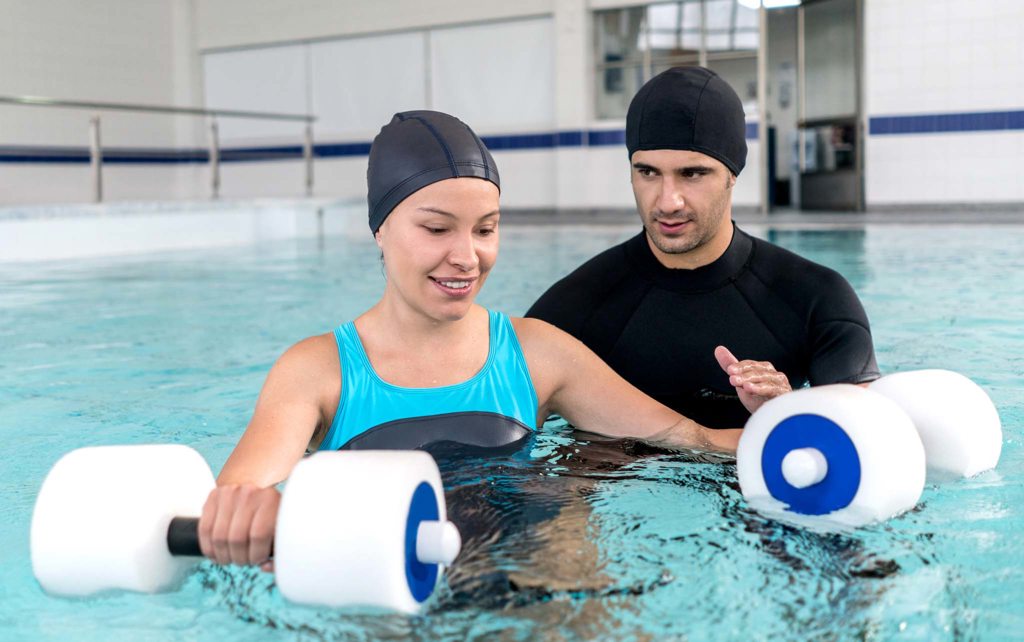Aquatic Therapy Can Help After an Injury or Accident

Swimming pools are not just for beating the heat. They can also be a great way to receive physical therapy while recovering from orthopedic injuries or traumatic accidents, as well as managing musculoskeletal and neurological conditions.
Physical therapy is a method of rehabilitation most often used to help restore function and health in patients after surgery, injury or illness. Aquatic therapy is a type of physical therapy that involves performing exercises in water. It promotes muscle relaxation, increases strength and circulation, reduces pain and increases ease of movement.
“Water reduces the force of gravity on the body, which can make exercise easier and less painful,” said Mark J. Hoffman, MPT, Service Line Director - Rehabilitation Services and Occupational Health at Penn Highlands Healthcare. “This can enable the patient to perform endurance, strengthening and stretching exercises that they may not be able to do on land.”
What are the benefits of aquatic therapy?
Aquatic therapy can help patients with weight bearing, balance training, flexibility, improving gait and strengthening core muscles.
- It is easy on the joints. When you are in the water, the buoyancy you experience while floating decreases the amount of weight and pressure on your joints, which can help you perform exercises that would be more difficult to do on the ground.
- It is less painful. Warm water has therapeutic benefits as well, such as reducing joint pain from arthritis, fibromyalgia or other chronic issues. It can also increase blood flow and relax tight or spasm-prone muscles.
- It makes rehab more enjoyable. Not only is it fun to be in a pool, but because aquatic therapy makes rehabilitation easier on the body, patients are more likely to continue with their recommended program.
Who may be a candidate for aquatic therapy?
Aquatic therapy can benefit patients with a wide range of health conditions, such as:
- Arthritis
- Chronic pain
- Fibromyalgia
- Gait deviations and balance difficulties
- Joint replacement
- Multiple sclerosis
- Osteoarthritis and rheumatoid arthritis
- Osteoporosis and stress fractures
- Peripheral neuropathy
- Post-stroke
- Spinal surgery
- Sports injuries
Aquatic therapy may not be right for some patients, such as those with:
- A chlorine allergy
- An extreme fear of water
- Incontinence
- Open wounds or non-healing ulcers
- Seizure disorders
What type of exercises are performed?
“There are many types of activities that we might recommend for someone undergoing aquatic therapy,” said Mark. “This could include water walking, arm exercises using water weights, resistance exercises using a kickboard or leg exercises using a noodle. Your rehabilitation specialist will create an exercise plan tailored to your needs.”
Penn Highlands Healthcare offers rehabilitation medicine, including inpatient and outpatient physical, occupational and speech therapy throughout Pennsylvania. Some facilities include aquatic therapy. The skilled therapists treat a variety of patients, including those with orthopedic and neurologic conditions, arthritis and musculoskeletal issues. For more information, visit www.phhealthcare.org/rehab.
